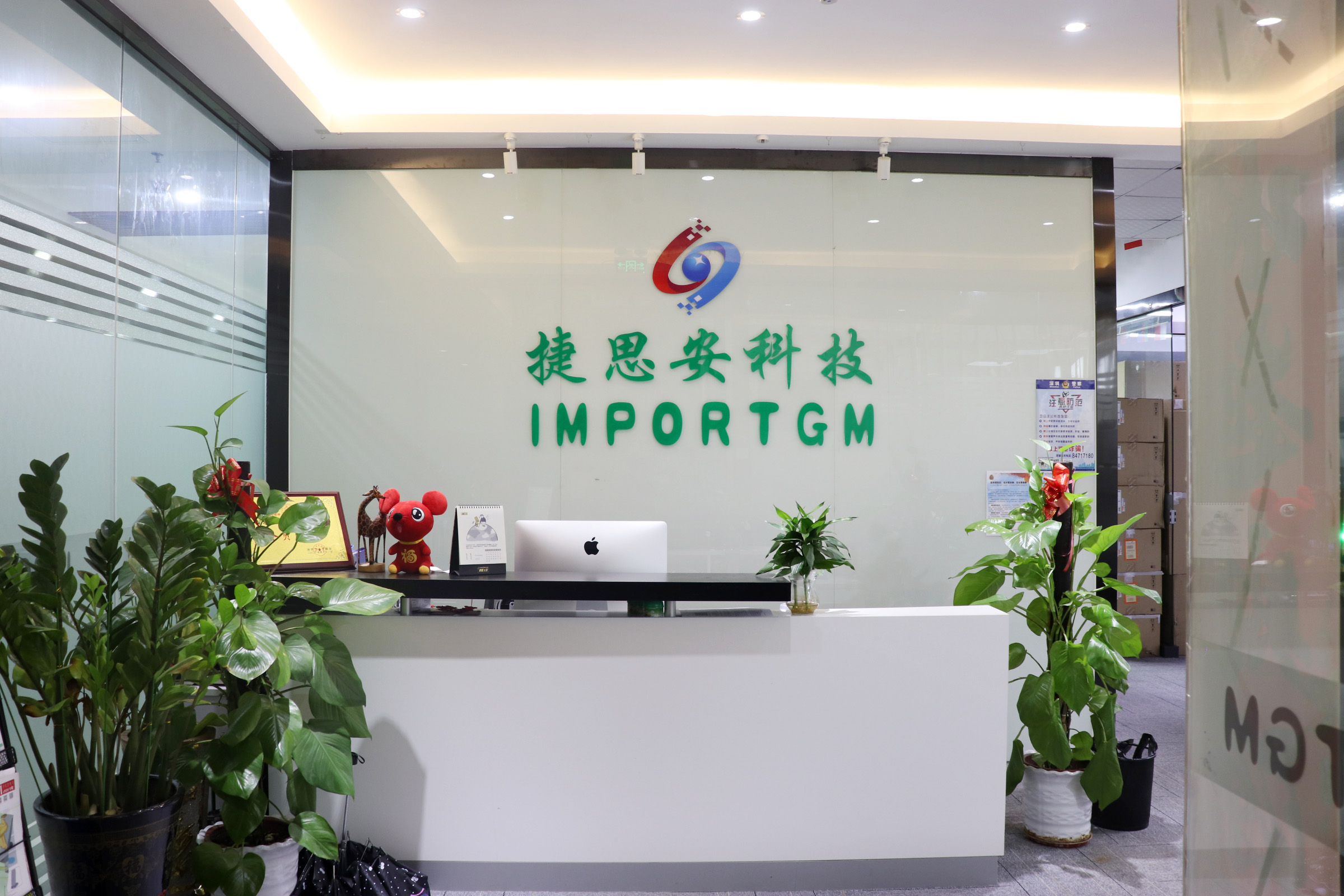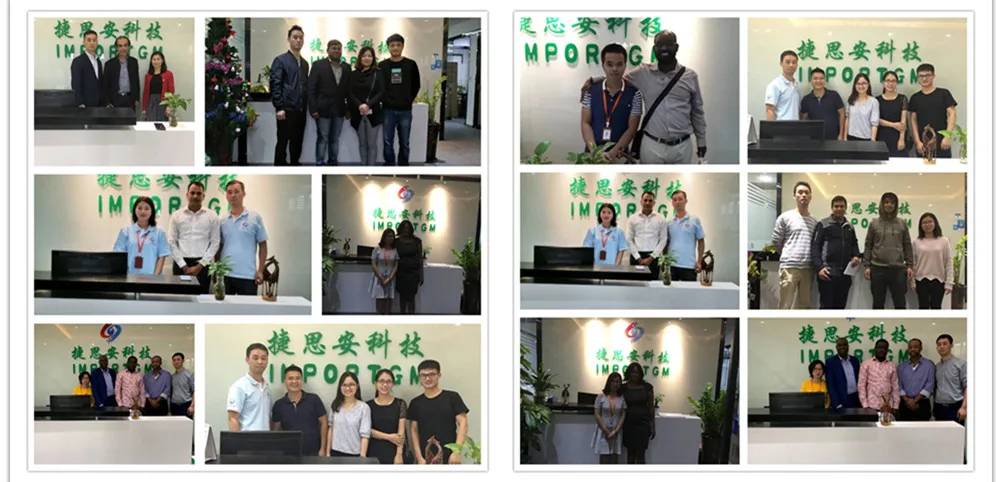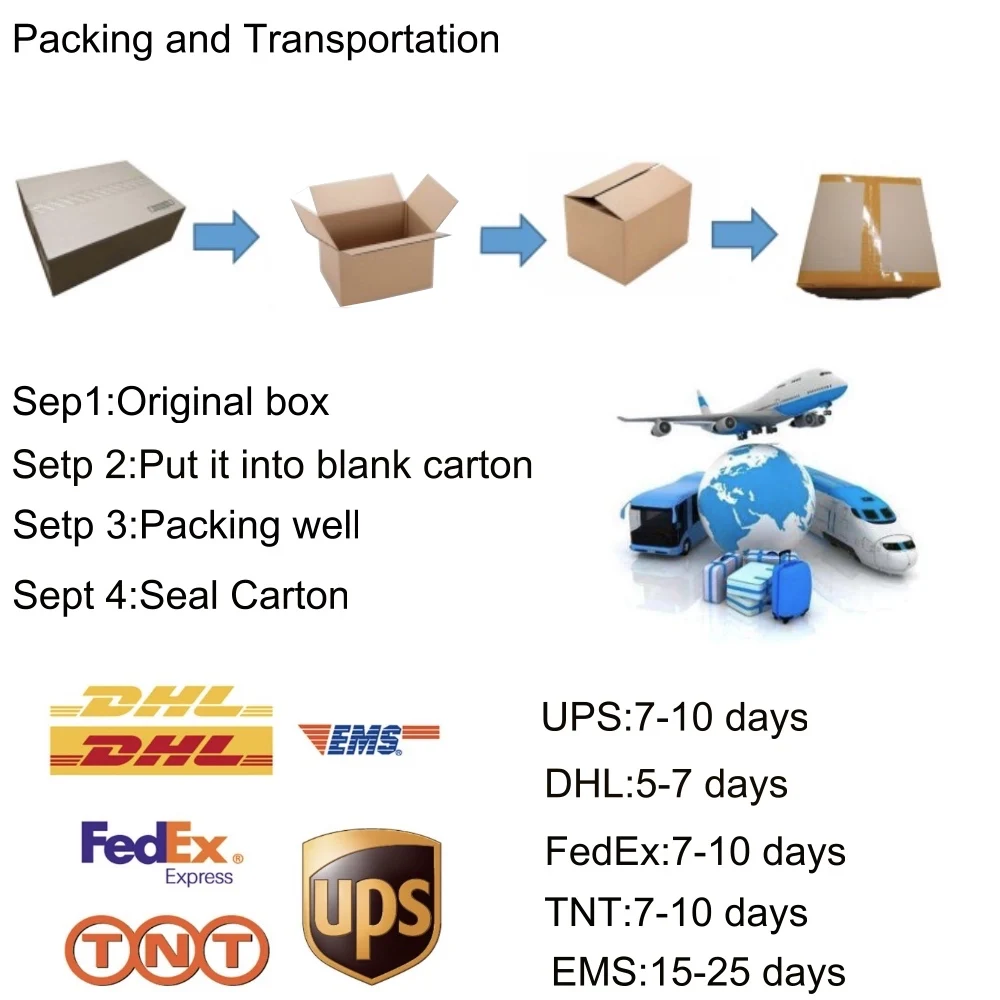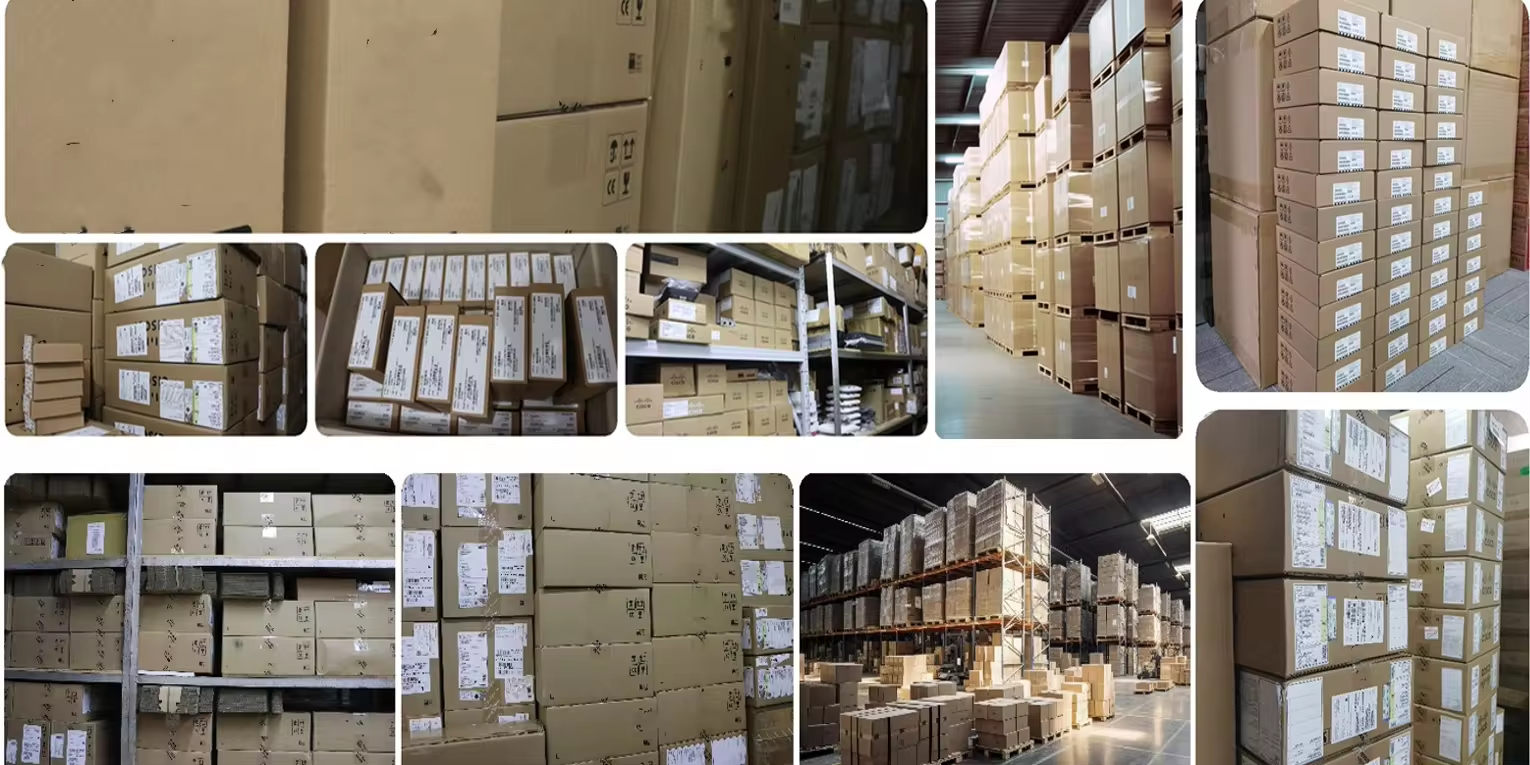N9K-C9364C-GX
cisco
factory new
1 year
| Availability: | |
|---|---|
| Quantity: | |
Based on Cisco® Cloud Scale technology, the Cisco Nexus® 9300-GX switches are the next generation of fixed Cisco Nexus 9000 Series Switches capable of supporting 400 Gigabit Ethernet (GE). With the increase in use cases for applications requiring Artificial Intelligence (AI) and Machine Learning (ML), the platform addresses the need for high-performance, power-efficient, compact switches in the networking infrastructure. These switches are designed to support 100G and 400G fabrics for mobile service provider environments, including the network edge, 5G, IoT, Professional Media Networking platform (PMN), and Network Functions Virtualization (NFV) The platform introduces a backward-compatible 400G optical interface Quad Small Form-Factor Pluggable – Double Density (QSFP-DD) to transparently migrate existing data center fabrics from 40-Gbps and 100-Gbps speeds to 400 Gbps and also offers various lower port speeds and densities, including 10, 25, 50, and 200 Gbps using breakouts. The Cisco Nexus 9300-GX provides investment protection for customers, delivering higher performance to meet scaled out spine-leaf fabrics to support growing traffic for cloud applications.
Cisco provides two modes of operation for Cisco Nexus 9000 Series Switches. Organizations can deploy Cisco Application Centric Infrastructure (Cisco ACI®) or Cisco NX-OS mode.
Cisco ACI is a holistic, intent-driven architecture with centralized automation and policy-based application profiles. It provides a robust, transport network for dynamic workloads and is built on a network fabric that combines time-tested protocols with new innovations to create a highly flexible, scalable, and resilient architecture of low-latency, high-bandwidth links. This fabric delivers a network that can support the most demanding and flexible data center environments.
Designed for the programmable network, the Cisco NX-OS operating system automates configuration and management for customers who want to take advantage of the DevOps operation model and tool sets.
Table 1 summarizes the Cisco Nexus GX Series Switches.
Table 1. Cisco Nexus 9300 switches
Model | Description |
Cisco Nexus 9316D Switch | 16 x 400/100-Gbps QSFP-DD ports |
Cisco Nexus 93600CD Switch | 28 x 100/40-Gbps Quad Small Form-Factor Pluggable (QSFP28) and |
Cisco Nexus 9364C Switch | 64 x 100/40-Gbps Quad Small Form-Factor Pluggable (QSFP28) |
The Cisco Nexus 9316D-GX Switch (Figure 1) is a 1RU switch that supports 12.8 Tbps of bandwidth and over 4.3 bpps. The switch can be configured to work as 10/25/40/50/100/200/400-Gbps offering flexible options in a compact form factor. Please see feature table below for more information.
Figure 1.
Cisco Nexus 9316D Switch
The Cisco Nexus 93600CD-GX Switch (Figure 2) is a 1RU switch that supports 12 Tbps of bandwidth and 4.0 bpps across 28 fixed 40/100G QSFP-28 ports and 8 fixed 10/25/40/50/100/200/400G QSFP-DD ports. The 28 ports support 10/25-Gbps. Please see feature table below for more information.
Figure 2.
Cisco Nexus 93600CD Switch
The Cisco Nexus 9364C-GX Switch (Figure 3) is a 2RU switch that supports 12.8 Tbps of bandwidth and over 4.3 bpps across 64 fixed 40/100G QSFP-28 ports. Please see feature table below for more information.
Cisco Nexus 9364C Switch
The Cisco Nexus 9300-GX Series provides the following features and benefits:
● Architectural flexibility
◦ Virtual Extensible LAN (VXLAN) Ethernet VPN (EVPN) fabrics, inclusive of hierarchical multisite support (Refer to the VXLAN network with Multiprotocol BGP [MP-BGP] EVPN control plane for more information)
◦ Three-tier Border Gateway Protocol (BGP) architectures, enabling horizontal, nonblocking IPv6 network fabrics at web scale
◦ Comprehensive protocol support for Layer-3 (v4 and v6) unicast and multicast routing protocol suites, including BGP, Open Shortest Path First (OSPF), Enhanced Interior Gateway Routing Protocol (EIGRP), Routing Information Protocol Version 2 (RIPv2), Protocol Independent Multicast Sparse Mode (PIM-SM), Source-Specific Multicast (SSM), and Multicast Source Discovery Protocol (MSDP)
◦ Segment Routing (SR and SRv6) enables the network to forward Multiprotocol Label Switching (MPLS) packets and to engineer traffic without Resource Reservation Protocol (RSVP) Traffic Engineering (TE). It provides a control-plane alternative for increased network scalability and virtualization. Cisco IP Fabric for Media helps you migrate from an SDI router to an IP-based infrastructure. In an IP-based infrastructure, a single cable has the capacity to carry multiple bidirectional traffic flows and can support different flow sizes without requiring changes to the physical infrastructure.
◦ Nexus Dashboard Data Broker provides customers with complete observability into their network and solution(s) that can help them to identify and mitigate security threats, realize and remediate performance bottlenecks, adhere to data compliance, and have insight into capacity planning operations.
● Extensive programmability
◦ Day-zero automation through Power On Auto Provisioning (POAP), drastically reducing provisioning time
◦ Industry-leading integrations for leading DevOps configuration management applications, such as Ansible. Extensive native YANG and industry-standard OpenConfig model support through RESTCONF/NETCONF/gNMI.
◦ REST API interacting with Data Management Engine (DME)
◦ Model-driven telemetry, which enhances network observability
◦ Third-party application hosting using Cisco Application Framework (CAF)
● High scalability, flexibility, and security
◦ Flexible forwarding tables support up to one million shared entries on GX models. Flexible use of TCAM space allows for custom definition of Access Control List (ACL) templates
● AI/ML networking
◦ Cisco Nexus 9300 GX Series Fixed Switches support innovative congestion management and flow control algorithms along with the right latency and telemetry to meet the design requirements of AI/ML fabrics.
◦ Priority Flow Control (PFC) is a key capability supported on Cisco Nexus 9000 Series Switches that prevents Ethernet frame drops by signaling, controlling, and managing Ethernet flows along the path by sending pause frames to appropriate senders.
◦ The platform also supports Explicit Congestion Notification (ECN), which provides end-to-end notification per IP flow by marking packets that experienced congestion, without dropping traffic. The platform is capable of tracking ECN statistics, including the number of marked packets that have experienced congestion.
◦ The platform offers lossless transport for Remote Direct Memory Access (RDMA) over Converged Ethernet (RoCE) with the support of Data Center Bridging (DCB) protocols:
◦ Enhanced Transmission Selection (ETS) reserves bandwidth per priority class in network contention situations.
◦ Data Center Bridging Exchange Protocol (DCBX) can discover and exchange priority and bandwidth information with endpoints.
◦ Weighted Random Early Detection (WRED) is a congestion-avoidance technique that allows Cisco Nexus 9000 Series Switches to detect and react to congestion in the network by marking flows that could cause congestion.
◦ The platform offers Cisco’s innovative intelligent buffer management, which offers the capability to distinguish mice and elephant flows and apply different queue-management schemes to them based on their network forwarding requirements in the event of link congestion.
◦ Approximate Fair Dropping (AFD) with Elephant Trap (ETRAP). By using ETRAP, AFD distinguishes long-lived elephant flows from short-lived mice flows. ETRAP measures the byte counts of incoming flows and compares this against the user-defined ETRAP threshold. After a flow crosses the threshold, it becomes an elephant flow.
◦ Dynamic Packet Prioritization (DPP) provides the capability of separating mice flows and elephant flows into two different queues so that buffer space can be allocated to them independently.
● Hardware and software high availability
◦ Virtual Port-Channel (vPC) technology provides Layer 2 multipathing through the elimination of Spanning Tree Protocol (STP). It also enables fully utilized bisectional bandwidth and simplified Layer 2 logical topologies without the need to change the existing management and deployment models.
◦ The 64-way Equal-Cost MultiPath (ECMP) routing enables the use of Layer 3 fat-tree designs. This feature helps organizations prevent network bottlenecks, increase resiliency, and add capacity with little network disruption.
◦ Software Maintenance Upgrade (SMU) contains fixes for a specific defect. They provide a quick resolution of critical issues.
◦ In-Service Software Upgrades (ISSUs)s enable upgrades of device software while the switch continues to forward traffic. ISSUs reduce or eliminate the downtime typically caused by software upgrades.
◦ The switches use hot-swappable Power-Supply Units (PSUs) and fans with N+1 redundancy.
● Cisco Nexus Dashboard
◦ Cisco Nexus Dashboard is a platform that transforms data-center and cloud network operations through simplicity, automation, and analytics. Cisco Nexus Dashboard Fabric Controller (NDFC), Cisco Nexus Dashboard Insights (NDI), Cisco Nexus Dashboard Orchestrator (NDO), and Cisco Nexus Dashboard Data Broker (NDDB) are integrated as services into Cisco Nexus Dashboard.
◦ Cisco Nexus Dashboard is included with all Cisco Nexus 9000 switch tiered licenses. Cisco Nexus Dashboard Fabric Controller requires the Cisco Data Center Networking (DCN) Essentials license, Cisco Nexus Dashboard Orchestrator requires Cisco DCN Advantage, and Cisco Nexus Dashboard Insights requires the Cisco DCN Premier or Cisco DCN Day-2 Ops add-on license.
Table 2 lists the specifications for the Cisco Nexus GX Series fixed switches.
Table 2. Cisco Nexus 9300-GX Series switch specifications
Item | Specifications | ||
Device | N9K-C9316D-GX | N9K-C93600CD-GX | N9K-C9364C-GX |
Ports | ● 16 x 400/100/40-Gbps QSFP-DD ports | ● 28 x 100/40-Gbps QSFP28 ports and 8 x 400/100-Gbps QSFP-DD ports | ● 64 x 100/40-Gbps QSFP28 ports |
Supported speeds | ● 40/100/400-Gbps Ethernet● Breakout supported on all ports, 1-16: 2x200, 4x100, 2x100, 8x50, 4x50, 2x50, 4x25, 4x10● 10G w/QSA | ● 40/100-Gbps on downlinks● 40/100/400-Gbps on uplinks● Breakout supported: ◦ 1-24: 2x50G on all ports, 4x10G and 4x25G on odd ports with even ports purged ◦ 25-28: 2x50G, 4x10G, 4x25G on all ports ◦ 29-36: 2x50G, 4x10G, 4x25G, 4x100G on converted downlinks ● 10G w/QSA | ● 40/100-Gbps● Breakout supported:● 2x50, 2x25, 2x10 on all ports● 4x10, 4x25G on all odd numbered ports● 10G w/QSA |
CPU | ● 4 cores | ● 4 cores | ● 4 cores |
System memory | ● 32 GB | ● 32 GB | ● Up to 32 GB |
SSD Drive | ● 128 GB | ● 128 GB | ● 128 GB |
System buffer | ● 80 MB | ● 80 MB | ● 80 MB |
Management ports | ● 2 ports: 1 RJ-45 and 1 SFP | ● 2 ports: 1 RJ-45 and 1 SFP | ● 2 ports: 1 RJ-45 and 1 SFP |
USB Ports | ● 1 | ● 1 | ● 1 |
RS-232 serial ports | ● 1 | ● 1 | ● 1 |
Power Supplies | ● 1100W AC, 1100W DC, 1100W HVAC/HVDC | ● 1100W AC, 1100W DC, 1100W HVAC/HVDC | ● 2000W AC, 2000W DC, 2000W HVAC/HVDC |
Typical power (AC) | ● 420W | ● 586W | ● 811W |
Maximum power (AC) | ● 1010W | ● 1071W | ● 1622W |
Input voltage (AC) | ● 100 to 240V | ● 100 to 240V | ● 100 to 240V |
Input voltage | ● 100 to 277V | ● 100 to 277V | ● 100 to 277V |
Input voltage (DC) | ● –40 to –72V | ● –40 to –72V | ● –40 to –72V |
Input voltage | ● –240 to –380V | ● –240 to –380V | ● –240 to –380V |
Frequency (AC) | ● 50 to 60 Hz | ● 50 to 60 Hz | ● 50 to 60 Hz |
Fans | ● 5+1 redundancy | ● 5+1 redundancy | ● 3+1 redundancy |
Airflow | ● Port-side intake and exhaust | ● Port-side intake and exhaust | ● Port-side intake and exhaust |
Physical dimensions | ● (H x W x D): 1.72 x 17.37 x 25.5 in. (4.37 x 44.13 x 64.8 cm) | ● (H x W x D): 1.72 x 17.37 x 25.5 in. (4.37 x 44.13 x 64.8 cm) | ● Dimensions (H x W x D): 3.39 x 17.41 x 22.59 in. (8.61 x 44.23 x 57.4 cm) |
Acoustics | ● 73.2 dBA at 50% fan speed, 81.8 dBA at 70% fan speed, and 88.8 dBA at 100% fan speed | ● 73.2 dBA at 50% fan speed, 81.8 dBA at 70% fan speed, and 88.8 dBA at 100% fan speed | ● 77.3 dBA at 50% fan speed, 88.6 dBA at 70% fan speed, and 95.8 dBA at 100% fan speed |
RoHS compliance | ● Yes | ● Yes | ● Yes |
Mean Time Between Failure (MTBF) | ● 323,140 hours | ● 295,515 hours | ● 237,760 hours |
Minimum ACI image | ● ACI-N9KDK9-14.2(2e) | ● ACI-N9KDK9-14.2(2e) | ● ACI-N9KDK9-14.2(3) |
Minimum NX-OS image | ● NXOS-9.3.3 | ● NXOS-9.3.3 | ● NXOS-9.3.3 |
The Cisco Nexus GX Series also introduces support of single-chip ACI spine-and-leaf functionality to enable customers to use a given GX series device, either in ACI spine or ACI leaf deployment for fully flexible deployments.
Table 3. ACI support
Item | N9K-C9316D-GX | N9K-C93600CD-GX | N9K-C9364C-GX |
ACI spine | Yes | Yes | Yes |
ACI leaf | Yes | Yes | Yes |
Based on Cisco® Cloud Scale technology, the Cisco Nexus® 9300-GX switches are the next generation of fixed Cisco Nexus 9000 Series Switches capable of supporting 400 Gigabit Ethernet (GE). With the increase in use cases for applications requiring Artificial Intelligence (AI) and Machine Learning (ML), the platform addresses the need for high-performance, power-efficient, compact switches in the networking infrastructure. These switches are designed to support 100G and 400G fabrics for mobile service provider environments, including the network edge, 5G, IoT, Professional Media Networking platform (PMN), and Network Functions Virtualization (NFV) The platform introduces a backward-compatible 400G optical interface Quad Small Form-Factor Pluggable – Double Density (QSFP-DD) to transparently migrate existing data center fabrics from 40-Gbps and 100-Gbps speeds to 400 Gbps and also offers various lower port speeds and densities, including 10, 25, 50, and 200 Gbps using breakouts. The Cisco Nexus 9300-GX provides investment protection for customers, delivering higher performance to meet scaled out spine-leaf fabrics to support growing traffic for cloud applications.
Cisco provides two modes of operation for Cisco Nexus 9000 Series Switches. Organizations can deploy Cisco Application Centric Infrastructure (Cisco ACI®) or Cisco NX-OS mode.
Cisco ACI is a holistic, intent-driven architecture with centralized automation and policy-based application profiles. It provides a robust, transport network for dynamic workloads and is built on a network fabric that combines time-tested protocols with new innovations to create a highly flexible, scalable, and resilient architecture of low-latency, high-bandwidth links. This fabric delivers a network that can support the most demanding and flexible data center environments.
Designed for the programmable network, the Cisco NX-OS operating system automates configuration and management for customers who want to take advantage of the DevOps operation model and tool sets.
Table 1 summarizes the Cisco Nexus GX Series Switches.
Table 1. Cisco Nexus 9300 switches
Model | Description |
Cisco Nexus 9316D Switch | 16 x 400/100-Gbps QSFP-DD ports |
Cisco Nexus 93600CD Switch | 28 x 100/40-Gbps Quad Small Form-Factor Pluggable (QSFP28) and |
Cisco Nexus 9364C Switch | 64 x 100/40-Gbps Quad Small Form-Factor Pluggable (QSFP28) |
The Cisco Nexus 9316D-GX Switch (Figure 1) is a 1RU switch that supports 12.8 Tbps of bandwidth and over 4.3 bpps. The switch can be configured to work as 10/25/40/50/100/200/400-Gbps offering flexible options in a compact form factor. Please see feature table below for more information.
Figure 1.
Cisco Nexus 9316D Switch
The Cisco Nexus 93600CD-GX Switch (Figure 2) is a 1RU switch that supports 12 Tbps of bandwidth and 4.0 bpps across 28 fixed 40/100G QSFP-28 ports and 8 fixed 10/25/40/50/100/200/400G QSFP-DD ports. The 28 ports support 10/25-Gbps. Please see feature table below for more information.
Figure 2.
Cisco Nexus 93600CD Switch
The Cisco Nexus 9364C-GX Switch (Figure 3) is a 2RU switch that supports 12.8 Tbps of bandwidth and over 4.3 bpps across 64 fixed 40/100G QSFP-28 ports. Please see feature table below for more information.
Cisco Nexus 9364C Switch
The Cisco Nexus 9300-GX Series provides the following features and benefits:
● Architectural flexibility
◦ Virtual Extensible LAN (VXLAN) Ethernet VPN (EVPN) fabrics, inclusive of hierarchical multisite support (Refer to the VXLAN network with Multiprotocol BGP [MP-BGP] EVPN control plane for more information)
◦ Three-tier Border Gateway Protocol (BGP) architectures, enabling horizontal, nonblocking IPv6 network fabrics at web scale
◦ Comprehensive protocol support for Layer-3 (v4 and v6) unicast and multicast routing protocol suites, including BGP, Open Shortest Path First (OSPF), Enhanced Interior Gateway Routing Protocol (EIGRP), Routing Information Protocol Version 2 (RIPv2), Protocol Independent Multicast Sparse Mode (PIM-SM), Source-Specific Multicast (SSM), and Multicast Source Discovery Protocol (MSDP)
◦ Segment Routing (SR and SRv6) enables the network to forward Multiprotocol Label Switching (MPLS) packets and to engineer traffic without Resource Reservation Protocol (RSVP) Traffic Engineering (TE). It provides a control-plane alternative for increased network scalability and virtualization. Cisco IP Fabric for Media helps you migrate from an SDI router to an IP-based infrastructure. In an IP-based infrastructure, a single cable has the capacity to carry multiple bidirectional traffic flows and can support different flow sizes without requiring changes to the physical infrastructure.
◦ Nexus Dashboard Data Broker provides customers with complete observability into their network and solution(s) that can help them to identify and mitigate security threats, realize and remediate performance bottlenecks, adhere to data compliance, and have insight into capacity planning operations.
● Extensive programmability
◦ Day-zero automation through Power On Auto Provisioning (POAP), drastically reducing provisioning time
◦ Industry-leading integrations for leading DevOps configuration management applications, such as Ansible. Extensive native YANG and industry-standard OpenConfig model support through RESTCONF/NETCONF/gNMI.
◦ REST API interacting with Data Management Engine (DME)
◦ Model-driven telemetry, which enhances network observability
◦ Third-party application hosting using Cisco Application Framework (CAF)
● High scalability, flexibility, and security
◦ Flexible forwarding tables support up to one million shared entries on GX models. Flexible use of TCAM space allows for custom definition of Access Control List (ACL) templates
● AI/ML networking
◦ Cisco Nexus 9300 GX Series Fixed Switches support innovative congestion management and flow control algorithms along with the right latency and telemetry to meet the design requirements of AI/ML fabrics.
◦ Priority Flow Control (PFC) is a key capability supported on Cisco Nexus 9000 Series Switches that prevents Ethernet frame drops by signaling, controlling, and managing Ethernet flows along the path by sending pause frames to appropriate senders.
◦ The platform also supports Explicit Congestion Notification (ECN), which provides end-to-end notification per IP flow by marking packets that experienced congestion, without dropping traffic. The platform is capable of tracking ECN statistics, including the number of marked packets that have experienced congestion.
◦ The platform offers lossless transport for Remote Direct Memory Access (RDMA) over Converged Ethernet (RoCE) with the support of Data Center Bridging (DCB) protocols:
◦ Enhanced Transmission Selection (ETS) reserves bandwidth per priority class in network contention situations.
◦ Data Center Bridging Exchange Protocol (DCBX) can discover and exchange priority and bandwidth information with endpoints.
◦ Weighted Random Early Detection (WRED) is a congestion-avoidance technique that allows Cisco Nexus 9000 Series Switches to detect and react to congestion in the network by marking flows that could cause congestion.
◦ The platform offers Cisco’s innovative intelligent buffer management, which offers the capability to distinguish mice and elephant flows and apply different queue-management schemes to them based on their network forwarding requirements in the event of link congestion.
◦ Approximate Fair Dropping (AFD) with Elephant Trap (ETRAP). By using ETRAP, AFD distinguishes long-lived elephant flows from short-lived mice flows. ETRAP measures the byte counts of incoming flows and compares this against the user-defined ETRAP threshold. After a flow crosses the threshold, it becomes an elephant flow.
◦ Dynamic Packet Prioritization (DPP) provides the capability of separating mice flows and elephant flows into two different queues so that buffer space can be allocated to them independently.
● Hardware and software high availability
◦ Virtual Port-Channel (vPC) technology provides Layer 2 multipathing through the elimination of Spanning Tree Protocol (STP). It also enables fully utilized bisectional bandwidth and simplified Layer 2 logical topologies without the need to change the existing management and deployment models.
◦ The 64-way Equal-Cost MultiPath (ECMP) routing enables the use of Layer 3 fat-tree designs. This feature helps organizations prevent network bottlenecks, increase resiliency, and add capacity with little network disruption.
◦ Software Maintenance Upgrade (SMU) contains fixes for a specific defect. They provide a quick resolution of critical issues.
◦ In-Service Software Upgrades (ISSUs)s enable upgrades of device software while the switch continues to forward traffic. ISSUs reduce or eliminate the downtime typically caused by software upgrades.
◦ The switches use hot-swappable Power-Supply Units (PSUs) and fans with N+1 redundancy.
● Cisco Nexus Dashboard
◦ Cisco Nexus Dashboard is a platform that transforms data-center and cloud network operations through simplicity, automation, and analytics. Cisco Nexus Dashboard Fabric Controller (NDFC), Cisco Nexus Dashboard Insights (NDI), Cisco Nexus Dashboard Orchestrator (NDO), and Cisco Nexus Dashboard Data Broker (NDDB) are integrated as services into Cisco Nexus Dashboard.
◦ Cisco Nexus Dashboard is included with all Cisco Nexus 9000 switch tiered licenses. Cisco Nexus Dashboard Fabric Controller requires the Cisco Data Center Networking (DCN) Essentials license, Cisco Nexus Dashboard Orchestrator requires Cisco DCN Advantage, and Cisco Nexus Dashboard Insights requires the Cisco DCN Premier or Cisco DCN Day-2 Ops add-on license.
Table 2 lists the specifications for the Cisco Nexus GX Series fixed switches.
Table 2. Cisco Nexus 9300-GX Series switch specifications
Item | Specifications | ||
Device | N9K-C9316D-GX | N9K-C93600CD-GX | N9K-C9364C-GX |
Ports | ● 16 x 400/100/40-Gbps QSFP-DD ports | ● 28 x 100/40-Gbps QSFP28 ports and 8 x 400/100-Gbps QSFP-DD ports | ● 64 x 100/40-Gbps QSFP28 ports |
Supported speeds | ● 40/100/400-Gbps Ethernet● Breakout supported on all ports, 1-16: 2x200, 4x100, 2x100, 8x50, 4x50, 2x50, 4x25, 4x10● 10G w/QSA | ● 40/100-Gbps on downlinks● 40/100/400-Gbps on uplinks● Breakout supported: ◦ 1-24: 2x50G on all ports, 4x10G and 4x25G on odd ports with even ports purged ◦ 25-28: 2x50G, 4x10G, 4x25G on all ports ◦ 29-36: 2x50G, 4x10G, 4x25G, 4x100G on converted downlinks ● 10G w/QSA | ● 40/100-Gbps● Breakout supported:● 2x50, 2x25, 2x10 on all ports● 4x10, 4x25G on all odd numbered ports● 10G w/QSA |
CPU | ● 4 cores | ● 4 cores | ● 4 cores |
System memory | ● 32 GB | ● 32 GB | ● Up to 32 GB |
SSD Drive | ● 128 GB | ● 128 GB | ● 128 GB |
System buffer | ● 80 MB | ● 80 MB | ● 80 MB |
Management ports | ● 2 ports: 1 RJ-45 and 1 SFP | ● 2 ports: 1 RJ-45 and 1 SFP | ● 2 ports: 1 RJ-45 and 1 SFP |
USB Ports | ● 1 | ● 1 | ● 1 |
RS-232 serial ports | ● 1 | ● 1 | ● 1 |
Power Supplies | ● 1100W AC, 1100W DC, 1100W HVAC/HVDC | ● 1100W AC, 1100W DC, 1100W HVAC/HVDC | ● 2000W AC, 2000W DC, 2000W HVAC/HVDC |
Typical power (AC) | ● 420W | ● 586W | ● 811W |
Maximum power (AC) | ● 1010W | ● 1071W | ● 1622W |
Input voltage (AC) | ● 100 to 240V | ● 100 to 240V | ● 100 to 240V |
Input voltage | ● 100 to 277V | ● 100 to 277V | ● 100 to 277V |
Input voltage (DC) | ● –40 to –72V | ● –40 to –72V | ● –40 to –72V |
Input voltage | ● –240 to –380V | ● –240 to –380V | ● –240 to –380V |
Frequency (AC) | ● 50 to 60 Hz | ● 50 to 60 Hz | ● 50 to 60 Hz |
Fans | ● 5+1 redundancy | ● 5+1 redundancy | ● 3+1 redundancy |
Airflow | ● Port-side intake and exhaust | ● Port-side intake and exhaust | ● Port-side intake and exhaust |
Physical dimensions | ● (H x W x D): 1.72 x 17.37 x 25.5 in. (4.37 x 44.13 x 64.8 cm) | ● (H x W x D): 1.72 x 17.37 x 25.5 in. (4.37 x 44.13 x 64.8 cm) | ● Dimensions (H x W x D): 3.39 x 17.41 x 22.59 in. (8.61 x 44.23 x 57.4 cm) |
Acoustics | ● 73.2 dBA at 50% fan speed, 81.8 dBA at 70% fan speed, and 88.8 dBA at 100% fan speed | ● 73.2 dBA at 50% fan speed, 81.8 dBA at 70% fan speed, and 88.8 dBA at 100% fan speed | ● 77.3 dBA at 50% fan speed, 88.6 dBA at 70% fan speed, and 95.8 dBA at 100% fan speed |
RoHS compliance | ● Yes | ● Yes | ● Yes |
Mean Time Between Failure (MTBF) | ● 323,140 hours | ● 295,515 hours | ● 237,760 hours |
Minimum ACI image | ● ACI-N9KDK9-14.2(2e) | ● ACI-N9KDK9-14.2(2e) | ● ACI-N9KDK9-14.2(3) |
Minimum NX-OS image | ● NXOS-9.3.3 | ● NXOS-9.3.3 | ● NXOS-9.3.3 |
The Cisco Nexus GX Series also introduces support of single-chip ACI spine-and-leaf functionality to enable customers to use a given GX series device, either in ACI spine or ACI leaf deployment for fully flexible deployments.
Table 3. ACI support
Item | N9K-C9316D-GX | N9K-C93600CD-GX | N9K-C9364C-GX |
ACI spine | Yes | Yes | Yes |
ACI leaf | Yes | Yes | Yes |
Shenzhen Importgm Technology Co., Ltd.
Shenzhen Importgm Technology Co., Ltd. has been operating in the I T services market since 2010,focusing on the R&D, design and sales of core equipment and general accessories in the field of network communications, we are distributors and resellers of worldwide brands of communication equipment, general accessories and system solutions for global customers.We offer a wide range of products, including networking routers, switches, firewalls, servers, I P phones, video conferencing equipment, wireless A P, P D U and modules. We are located in Shenzhen with convenient transportation access. Over the years we have developed a team of highly skilled staff that delivers quality and effective solutions and services. Based on our rich experience, we can supply products with stable packages, reliable delivery, competitive prices and on-time support. Our products are exported to customers in such regions as the Middle East, Africa, America,Europe and Asia. We also welcome O E M and O D M orders.Whether selecting current products from our inventory or seeking engineering assistance for your project bid, you can consult our business staff at any time. Our service does not end when the invoice is printed but begins as soon as you have received your order. Any customers' business visit and negotiation is warmly welcomed. Let's work together and win-win together.


Shenzhen Importgm Technology Co., Ltd.
Shenzhen Importgm Technology Co., Ltd. has been operating in the I T services market since 2010,focusing on the R&D, design and sales of core equipment and general accessories in the field of network communications, we are distributors and resellers of worldwide brands of communication equipment, general accessories and system solutions for global customers.We offer a wide range of products, including networking routers, switches, firewalls, servers, I P phones, video conferencing equipment, wireless A P, P D U and modules. We are located in Shenzhen with convenient transportation access. Over the years we have developed a team of highly skilled staff that delivers quality and effective solutions and services. Based on our rich experience, we can supply products with stable packages, reliable delivery, competitive prices and on-time support. Our products are exported to customers in such regions as the Middle East, Africa, America,Europe and Asia. We also welcome O E M and O D M orders.Whether selecting current products from our inventory or seeking engineering assistance for your project bid, you can consult our business staff at any time. Our service does not end when the invoice is printed but begins as soon as you have received your order. Any customers' business visit and negotiation is warmly welcomed. Let's work together and win-win together.








1. who are we?
We are based in Shenzhen,Guangdong, China, start from 2010,sell to Africa(15.00%),Mid East(15.00%),Southeast Asia(10.00%),Eastern Europe(10.00%),South America(9.00%),Northern Europe(5.00%),Central America(5.00%),Western Europe(5.00%),Domestic Market(5.00%),North America(5.00%),Oceania(5.00%),South Asia(3.00%),Southern Europe(3.00%),Eastern Asia(2.00%). There are total about 11-50 people in our office.
2. how can we guarantee quality?
Original brand new products; always pre-final Inspection before shipment;
3.what can you buy from us?
Switches, Routers, Firewalls, IP phones, Servers,Video Conference,AP, PDU,etc.
4. why should you buy from us not from other suppliers?
IMPORTGM has been operating in China for about 15 years. We are one of the largest and complete distributors and resellers of worldwide brands of communication equipment.
5. what services can we provide?
Accepted Delivery Terms: FOB,CFR,CIF,EXW,Express Delivery;
Accepted Payment Currency:USD,EUR,JPY,CAD,AUD,HKD,GBP,CNY,CHF;
Accepted Payment Type: T/T,L/C,MoneyGram,Credit Card,PayPal,Western Union,Cash,Escrow;
Language Spoken:English,Chinese,Spanish,Japanese,Portuguese,German,Arabic,French,Russian,etc.
1. who are we?
We are based in Shenzhen,Guangdong, China, start from 2010,sell to Africa(15.00%),Mid East(15.00%),Southeast Asia(10.00%),Eastern Europe(10.00%),South America(9.00%),Northern Europe(5.00%),Central America(5.00%),Western Europe(5.00%),Domestic Market(5.00%),North America(5.00%),Oceania(5.00%),South Asia(3.00%),Southern Europe(3.00%),Eastern Asia(2.00%). There are total about 11-50 people in our office.
2. how can we guarantee quality?
Original brand new products; always pre-final Inspection before shipment;
3.what can you buy from us?
Switches, Routers, Firewalls, IP phones, Servers,Video Conference,AP, PDU,etc.
4. why should you buy from us not from other suppliers?
IMPORTGM has been operating in China for about 15 years. We are one of the largest and complete distributors and resellers of worldwide brands of communication equipment.
5. what services can we provide?
Accepted Delivery Terms: FOB,CFR,CIF,EXW,Express Delivery;
Accepted Payment Currency:USD,EUR,JPY,CAD,AUD,HKD,GBP,CNY,CHF;
Accepted Payment Type: T/T,L/C,MoneyGram,Credit Card,PayPal,Western Union,Cash,Escrow;
Language Spoken:English,Chinese,Spanish,Japanese,Portuguese,German,Arabic,French,Russian,etc.